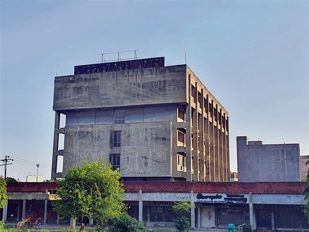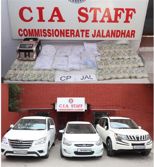
Valour: It’s a story of discipline, integrity and commitment of the soldiers. Tribune file photo
THERE is no greater medal of honour for war reporting than a benign piece of shrapnel lodged between the kidney and the pancreas. But unlike an old soldier, I don’t want to retell the tale of the shrapnel that nearly killed me and left me grievously injured; but it is time to recall the Kargil War — if we may call it a war. In a few weeks, we would be commemorating the 25th anniversary of shepherd Tashi Namgyal sighting Pakistani regulars in Pathan outfits, digging bunkers atop the Batalik mountain range.
The young officers and men who climbed 90-degree rock faces to brave bullets turned the story around to make Indians proud of their leadership.
What if Namgyal had fallen sick or broken his leg? What if his yaks had not gone missing? (he was apparently searching for the animals when he sighted the incursion). These are questions that a national security state needs to ponder over before making Katchatheevu a political issue to denigrate a leader who had redrawn the South Asian map by tearing apart a hostile neighbour to create a new nation altogether. In the era before satellite pictures, a shepherd was all that the Indian Army had to tell it about its biggest intelligence blunder.
All intelligence agencies, including the military intelligence, failed in every which way — forecasting, detecting, thwarting or even ascertaining the number of intruders once the transgression was detected by the shepherd. A former commander of the mountain division that fought the war said as much. This all-round intelligence failure was neither acknowledged nor punished. Militarily, the operation was limited to an area starting from the Zoji La and running 200 km eastwards on the Mushkoh-Drass-Kargil-Batalik-Turtuk axis, focused on 5-12 km of intrusion in the Batalik and Drass sectors on Tololing, Tiger Hill and unnamed mountaintops.
The air operations were limited to the Indian side of the Line of Control (LoC), while the Navy was not involved at all. In that sense, it was not a full-fledged war. The Indians suffered a large number of casualties to get the Pakistani men to vacate the mountaintops without crossing the LoC or the international border. The intruders had made a big tract of Indian territory vulnerable. Any vehicle travelling on National Highway 1A was in Pakistan’s crosshairs and any establishment in the region could be targeted. Even now, Pakistani trolls claim the possession of Point 5353 that offers them an overview of the area.
It was a saga of sacrifice for 559 bravehearts who laid down their lives climbing the mountaintops like ants. Without opening fire, Pakistanis could have killed them by simply rolling down boulders and that was the battle mostly about — soldiers climbing impossible mountain faces. Still, if the Indians climbed the mountains, engaged with the enemy, fought them and threw even the last intruder out, it is a story that has to be retold many times. It is a story of discipline, integrity and complete commitment to the nation of those officers and men who staked their lives valorously.
Ideally, the first in this series of articles should have been the personal account of the man who was involved in clearing the Tololing ridge and then capturing the Tiger Hill. He is still angry about not being given even a rough idea about the number of intruders, about having to see his closest comrade die in his arms, about being pushed into combat without any preparation, about logistics and just about everything else. But he decided to keep quiet. There are a lot of stories of Kargil that still have not been told, despite the many books, movies and opinion pieces that have been published in the past 25 years.
This Thursday, a British newspaper published a news story about Indian intelligence’s alleged involvement in eliminating Pakistani terrorists in their country. Still, there is a lot more to be heard about Pakistani perfidy in inviting then Indian Prime Minister Atal Bihari Vajpayee for a bus ride on February 19, when it was actively organising the Kargil intrusion. Going by various accounts, the number of intruders varied from 1,500 to 5,000, making it indeed a massive operation. There were reports of Pakistanis building eight helipads on the Indian side of the LoC.
India in 1999 lacked spy satellites and actionable HUMINT (human intelligence), but was the West too taken by surprise or, as it had happened many times in the past, did it wink at the Pakistanis taking Indians for the bus ride to sign the Lahore Declaration? Questions of diplomacy, spycraft and operational efficiency should reveal vulnerabilities that push Indians into the traps laid according to the same playbook since 1947. The Pakistani army, which attacked Jammu and Kashmir in October 1947 in the garb of tribals, repeated the attempt in 1965.
In 1999, the playbook remained the same with minimal alterations in the sense that the Pakistani strategic objective was not to capture J&K militarily — which they know is not possible after the 1971 war — but to derail any possible peace effort, expose the Indian military’s vulnerabilities and seriously sully its image over the J&K issue. The young officers and men who climbed 90-degree rock faces to brave bullets turned the story around to make Indians proud of their leadership. The immediate political outcome was Vajpayee’s victory in the elections, after which he was firmly in the saddle for full five years.
Politically, it proved immensely helpful for the BJP’s muscular hypernationalist image. In the din of celebrations was drowned forever a speech made by then US President Bill Clinton to both Houses of the Indian Parliament. On March 22, 2000, Clinton audaciously claimed credit for Indian soldiers repelling the intrusion: “… as American diplomacy did in urging the Pakistanis to go back behind the LoC in the Kargil crisis.”
Returning to recent times, the Doklam incursion and the Ladakh standoff are all variants of the playbook exposing Indian vulnerabilities on its borders that need to be discussed. Let us hope The Tribune’s Kargil series would be as popular and participative as the ones on 75 years of the Partition and 50 years of the 1971 war.
Join Whatsapp Channel of The Tribune for latest updates.



























